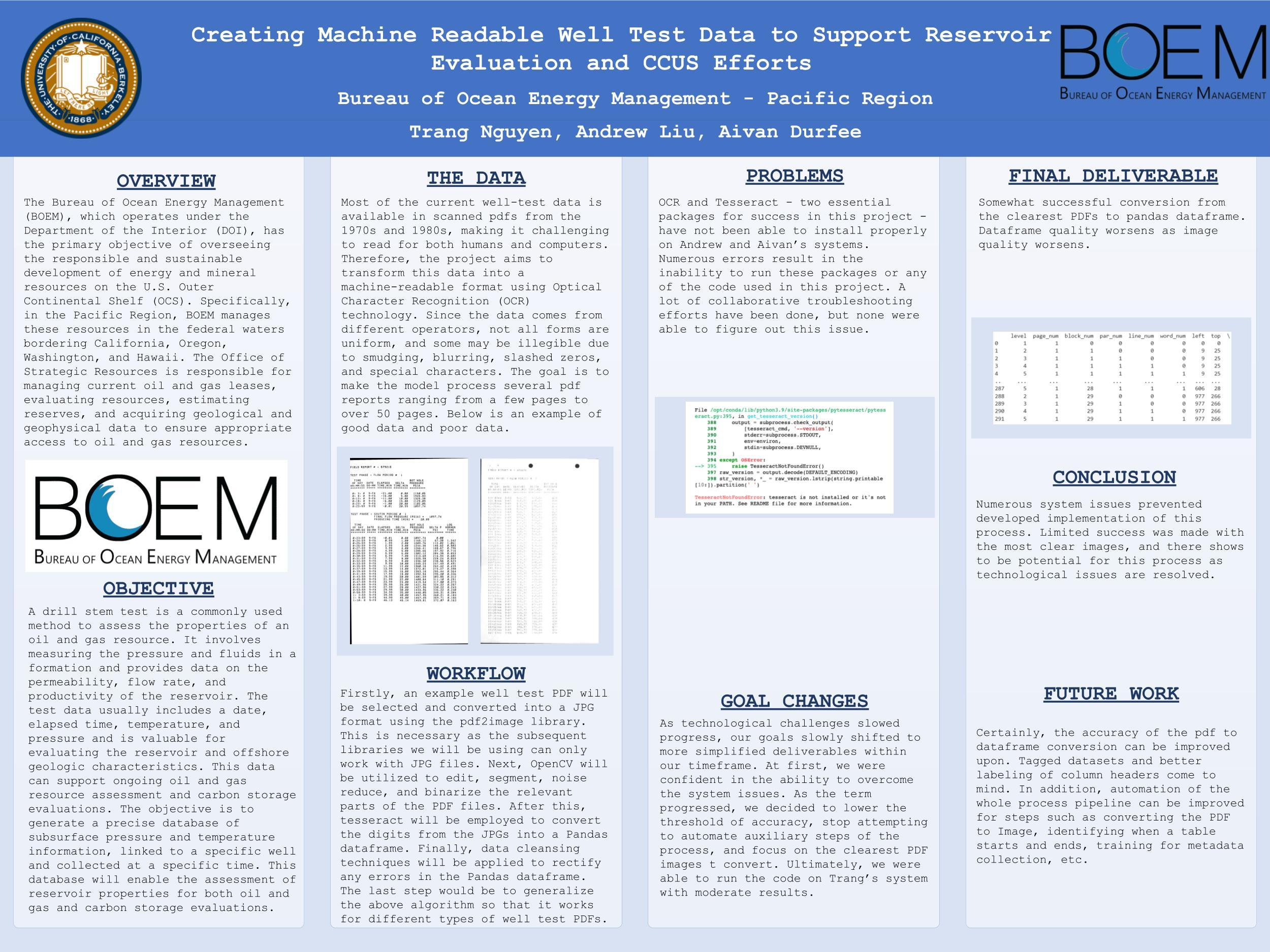The mission of the Bureau of Ocean Energy Management (BOEM) within the Department of the Interior (DOI) is to manage development of U.S. Outer Continental Shelf (OCS) energy and mineral resources in an environmentally and economically responsible way. The Pacific Region manages these resources in federal waters off the coasts of California, Oregon, Washington, and Hawaii. In the Office of Strategic Resources, part of our responsibility is to manage existing oil and gas leases, and appropriate access to oil and gas resources through resource evaluation, reserves estimation, and geological and geophysical data acquisition. In addition, in 2021 the Infrastructure Investment and Jobs Act was signed into law which gave the Secretary of the Interior the authority to grant a lease on the OCS for long-term carbon sequestration. Our section leverages geological and geophysical data (often collected 20+ years ago) to satisfy BOEM mission for the Pacific Region.
One way to evaluate an oil and gas resource is to perform a drill stem test. A drill stem test measures a formations’ pressure and fluids and can return data on formation properties such as permeability, flow rate, and estimates of productivity. The test data that is typically returned includes a date, elapsed time, temperature, and pressure. This data is extremely useful for evaluating a reservoir as well as certain geologic characteristics of the offshore. Not only does this information support ongoing oil and gas resource evaluation, but it can be used in new evaluations of potential carbon storage targets.
Unfortunately, much of the well test data that we currently have is contained within many scanned pdfs from the 1970s and 1980s. Sometimes the computer can read the text, other times numbers are difficult to read to the human eye. The project would be to transform the data into a machine readable format using OCR. Because different operators may have collected the data, not all forms are created equal. Some are easily read, others are smudged, blurred, slashed zeros, special characters etc. The model would need to be designed to support a wide range of file conditions, with additional built-in tests to quality check the data. It would be run on several reports in pdf format, ranging in length from a few pages to 50+ pages.
The end product would be an accurate database of subsurface pressure and temperature information, linked to a specific well and collected at a specific time, which will allow us to evaluate reservoir properties for oil and gas and carbon storage assessments.

